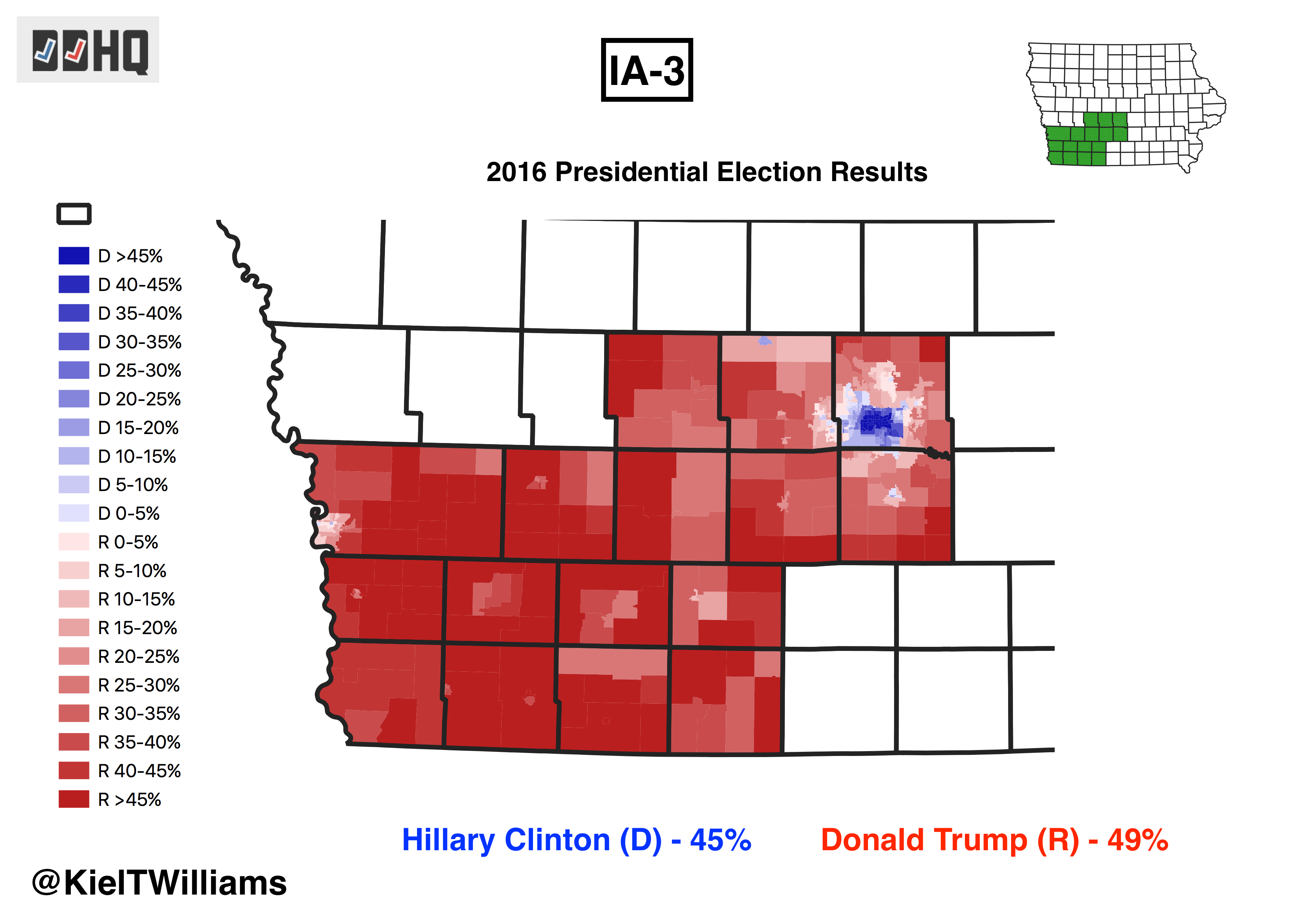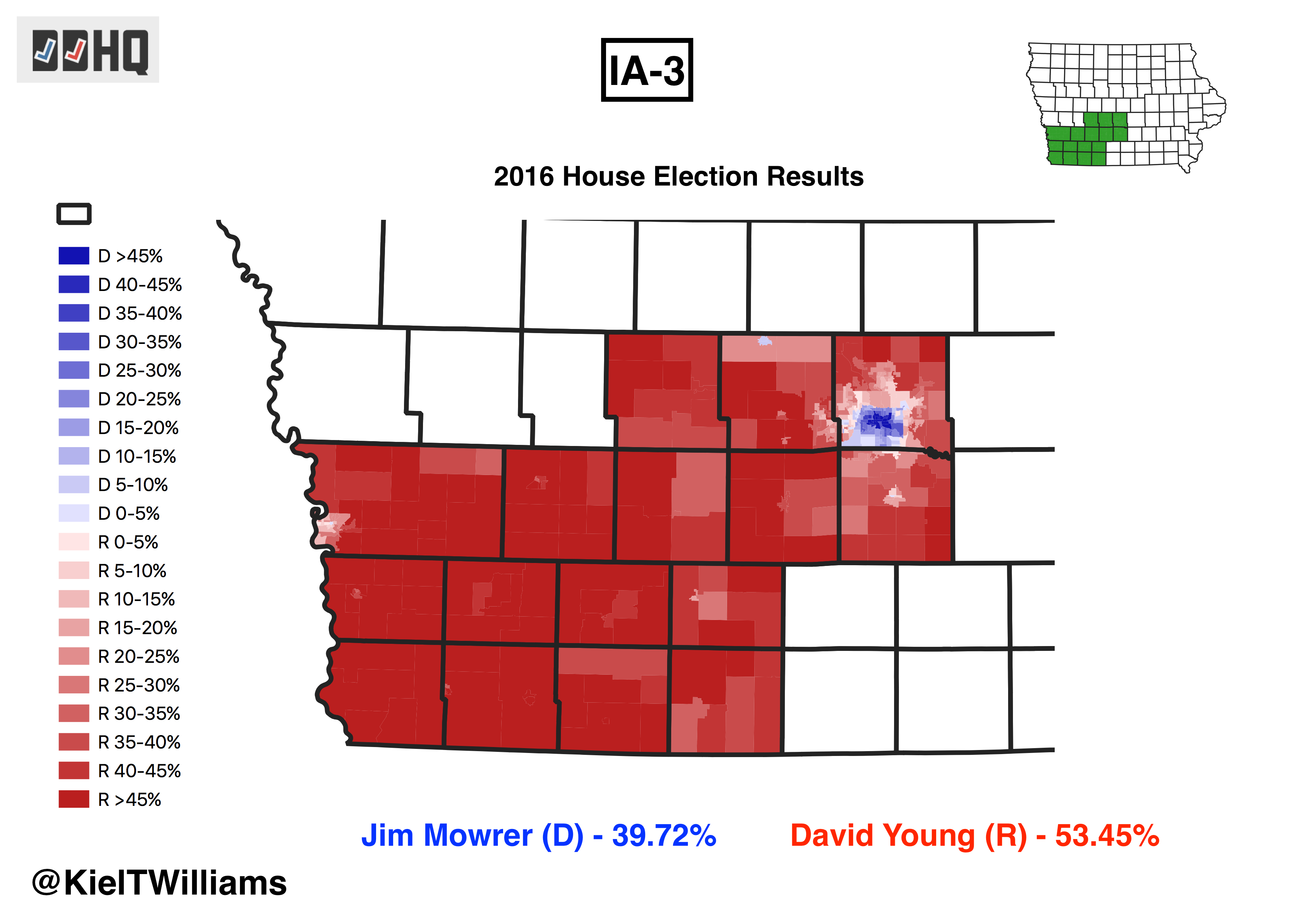Iowa’s 3rd Congressional district – represented by David Young (R) since Tom Latham’s retirement in 2014 – is one of the key districts to watch during the November midterms. This swingy R+1 district – encompassing Des Moines in the southwest corner of the state – voted for both Barack Obama and Donald Trump by 4-point margins. Despite its competitive appearance on paper, Democrats have struggled here since 2012.

Barack Obama’s victory in 2012 illustrates how Democrats can win in this district – or at least could, until recently. Obama ran-up massive margins in-and-around Des Moines, while avoiding a total wipe-out in the more rural western portion of the district. While he failed to win these areas, he routinely lost by fewer than 10 points. This rural performance, coupled with his deadlock on Des Moines, was sufficient to propel him to victory.

Real warning signs began to appear for Iowa Democrats in this district (and the entire state, really) during the 2014 midterm elections, when former Democratic Representative Bruce Braley, from IA-1, lost to state senator Joni Ernst by over 8 points. Braley’s collapse in the rural half of the district is particularly notable. In places where Obama at least remained competitive, Braley often lost by over 20 points. He also failed to carry many of the outlying precincts around Des Moines that Obama had won, contributing to his 9-point loss in the district.

These trends continued into the 2016 election, when Hillary Clinton lost to Donald Trump by around 4 points. She somewhat improved on Braley’s performance in the area immediately around Des Moines, but failed to move the dial very much in rural regions.

Interestingly, Clinton improved on Obama’s performance in western Des Moines – likely college educated white voters who, nationally, had shifted left against Donald Trump. However, her loss of many Obama-precincts on the eastern edge of Des Moines, coupled with Trump’s domination of rural areas, sealed her fate as it had in the rest of Iowa.

Democrats’ struggles in this district are thrown into starkest relief by their loss in the 2016 House election, when incumbent David Young demolished Iraq War veteran and college professor Jim Mowrer. In addition to his massive rural losses, Mowrer also won Des Moines by an even smaller margin than Braley and Clinton, resulting in his loss to Young by nearly 14 points.
This year Democrats are hoping to give David Young a more serious challenge. Their House candidate is Cindy Axne, a business owner and community activist. While David Young has substantially outraised her thus far, Axne’s numbers haven’t been terrible. National forecasters consistently view the race as competitive. The Optimus Election Model currently gives Republicans a 60% of retaining control here.
(Thanks to Miles Coleman for providing some of the data used in this analysis.)